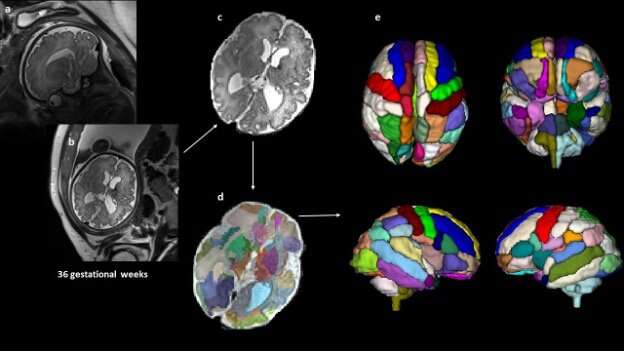Autism-associated brain differences can be observed in the womb

A new study using prenatal brain scans revealed significant differences in brain structures at around 25 weeks' gestation between children who were later diagnosed with ASD and those who were not. The study adds to mounting evidence that autism begins in early development and suggests possible opportunities to identify the disorder at an earlier age.
"Earlier detection means better treatment," said Alpen Ortug, Ph.D., a postdoctoral research fellow at Athinoula A. Martinos Center for Biomedical Imaging, Massachusetts General Hospital, Harvard Medical School, first author of the study. "Our results suggest that an increased volume of the insular lobe may be a strong prenatal MRI biomarker that could predict the emergence of ASD later in life."
Ortug will present the research at the American Association for Anatomy annual meeting during the Experimental Biology (EB) 2022 meeting, held in Philadelphia April 2–5
ASD, diagnosed in 1 in 68 children in the U.S., is a complex neurodevelopmental disorder that can cause challenges with communication, cognitive processing, emotional awareness and perception. The causes of ASD are unknown but both genetic and environmental factors are thought to play a role. While early treatment has been shown to improve language and cognitive abilities, current diagnostic tools can only identify the disorder around 18 months of age.
To find out if brain scans taken prenatally could help identify signs of ASD earlier, the researchers retrospectively analyzed 39 fetal MRI brain scans taken at Boston Children's Hospital. Nine of the children were later diagnosed with ASD, 20 were neurotypical and 10 did not have ASD but had other health conditions that were also observed in the children with ASD. The brain scans had been taken at about 25 weeks' gestation, on average.
After preprocessing, the researchers used an atlas-based automated anatomical labeling method to segment the brain scans and then compared the segmented brain regions between the different groups. The biggest differences were found in the brain's insular lobe, which had a significantly larger volume in the ASD group compared with the other three control groups. The insula is a region deep inside the brain that is thought to have a role in perceptual awareness, social behavior and decision-making, among other functions.
The findings align with other recent studies that have reported changes in the insular cortex in adults with autism and suggests these differences may begin in the womb. The researchers also found that the scans from children with ASD showed a significantly larger amygdala and hippocampal commissure compared with children who had other health conditions but not ASD.
"Given that many genetic and environmental factors could affect the emergence of ASD starting in the fetal stages, it is ideal to identify the earliest signature of brain abnormalities in prospective autism patients," said Ortug. "To the best of our knowledge, this is the first attempt to semi-automatically segment the brain regions in the prenatal stage in patients who are diagnosed with autism later and compare different groups of controls."
More information: Conference: www.experimentalbiology.org/
Abstract: www.eventscribe.net/2022/EB202 … p?presTarget=2001481



















